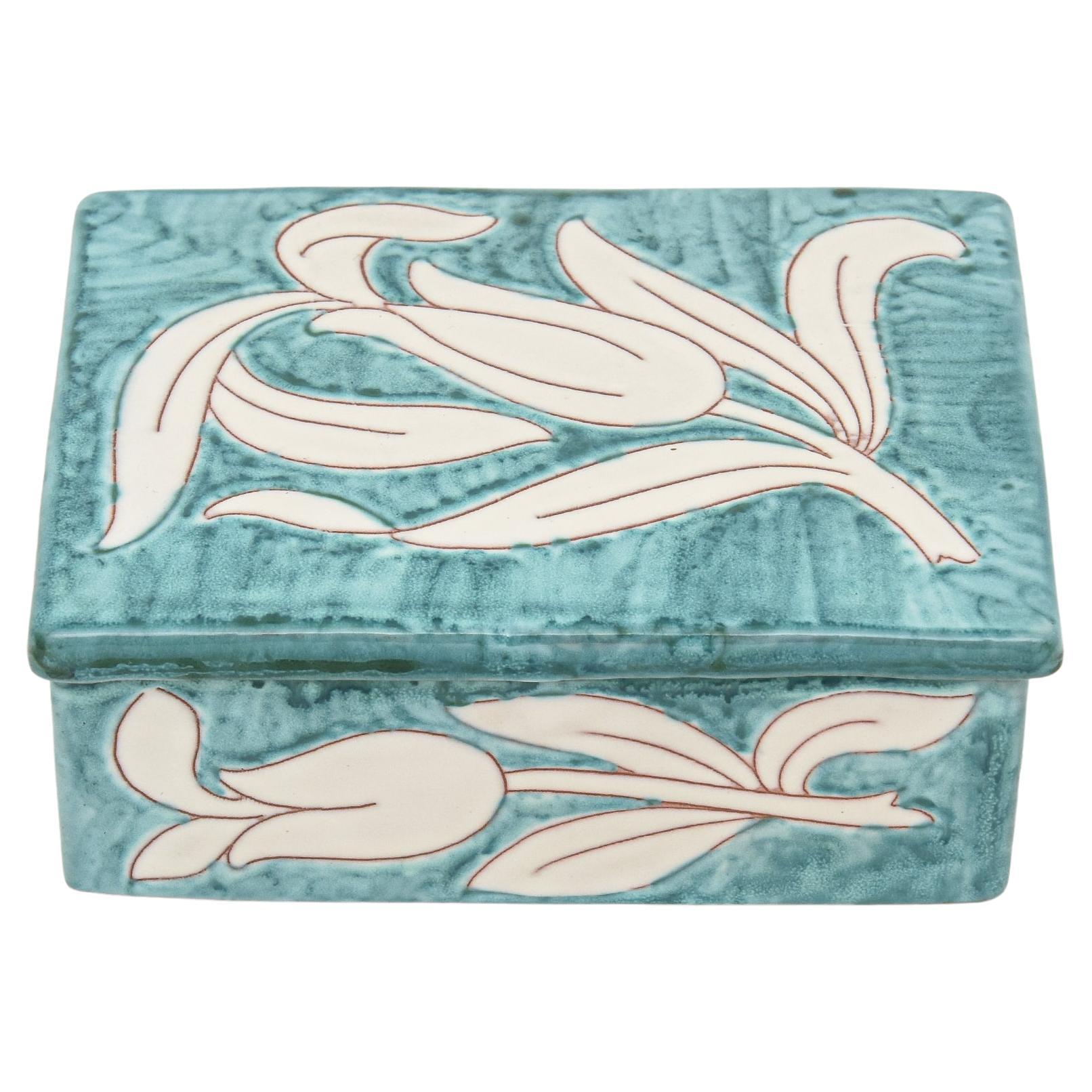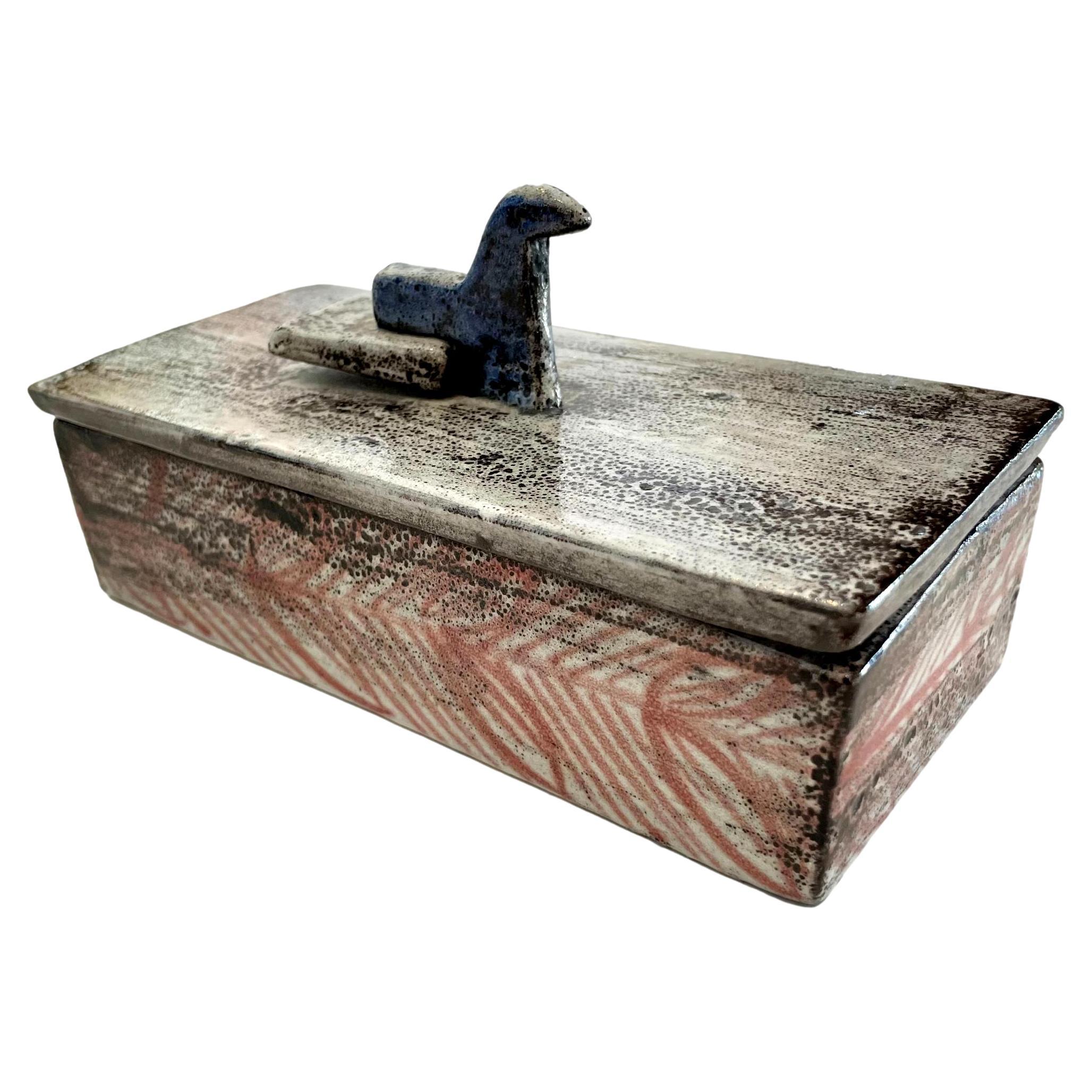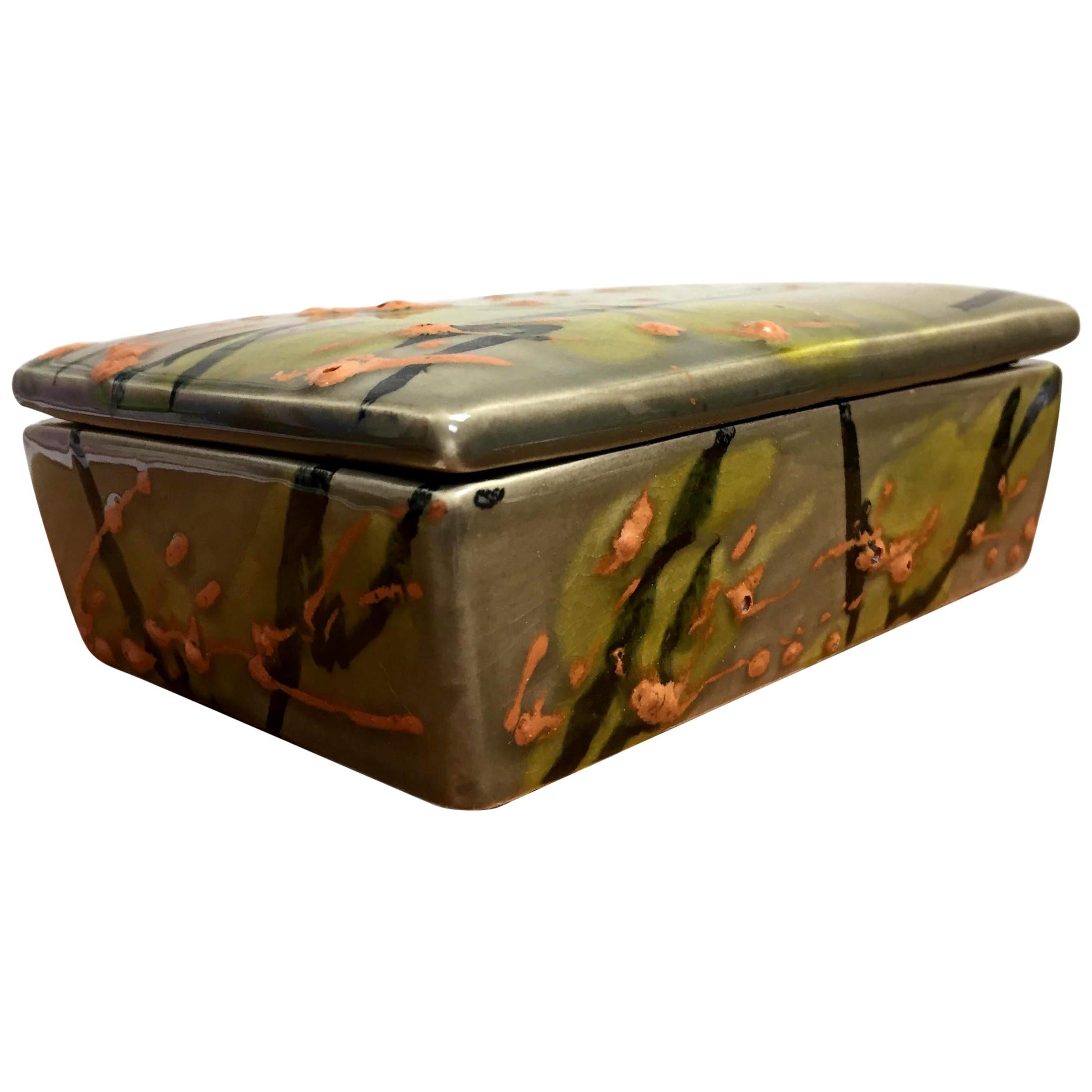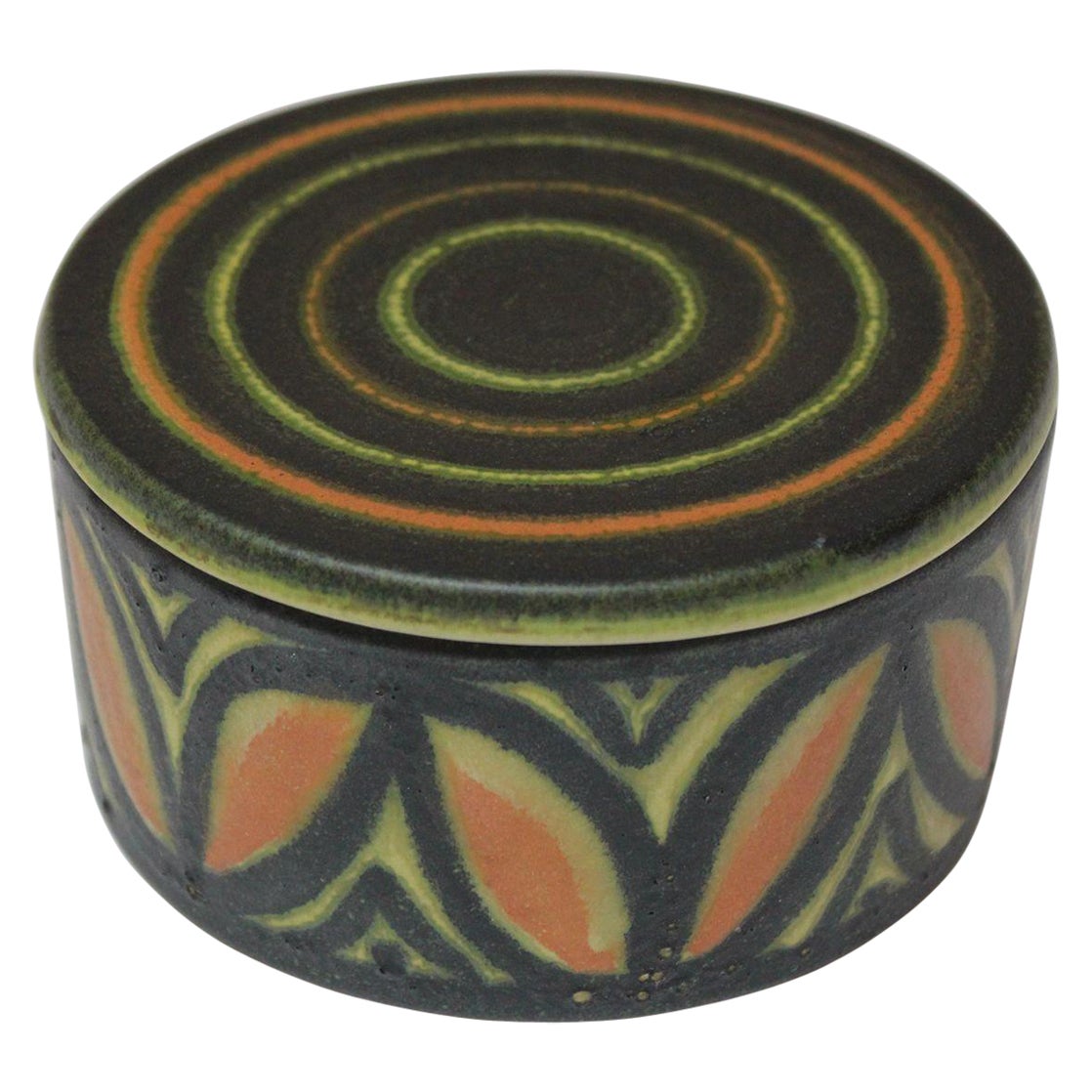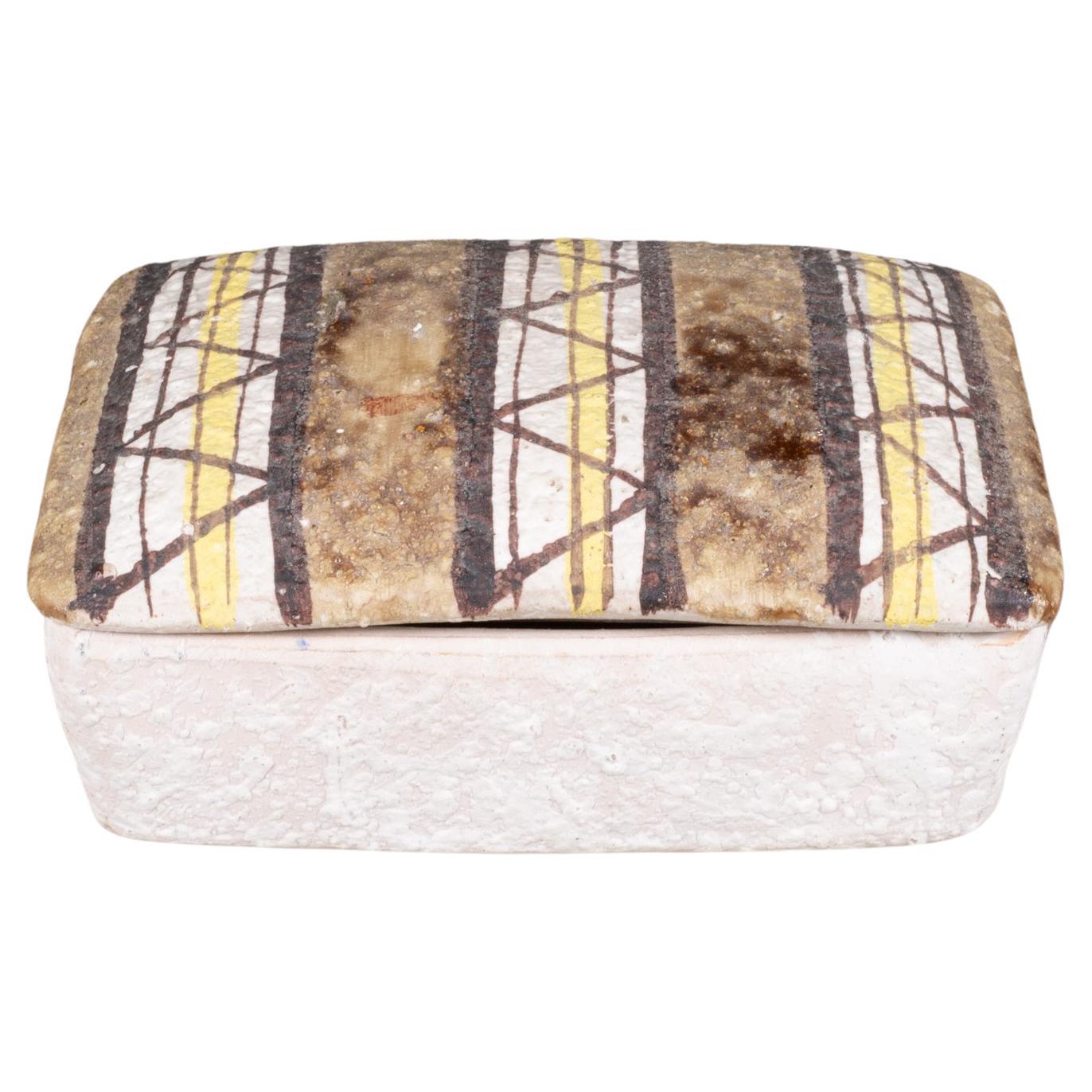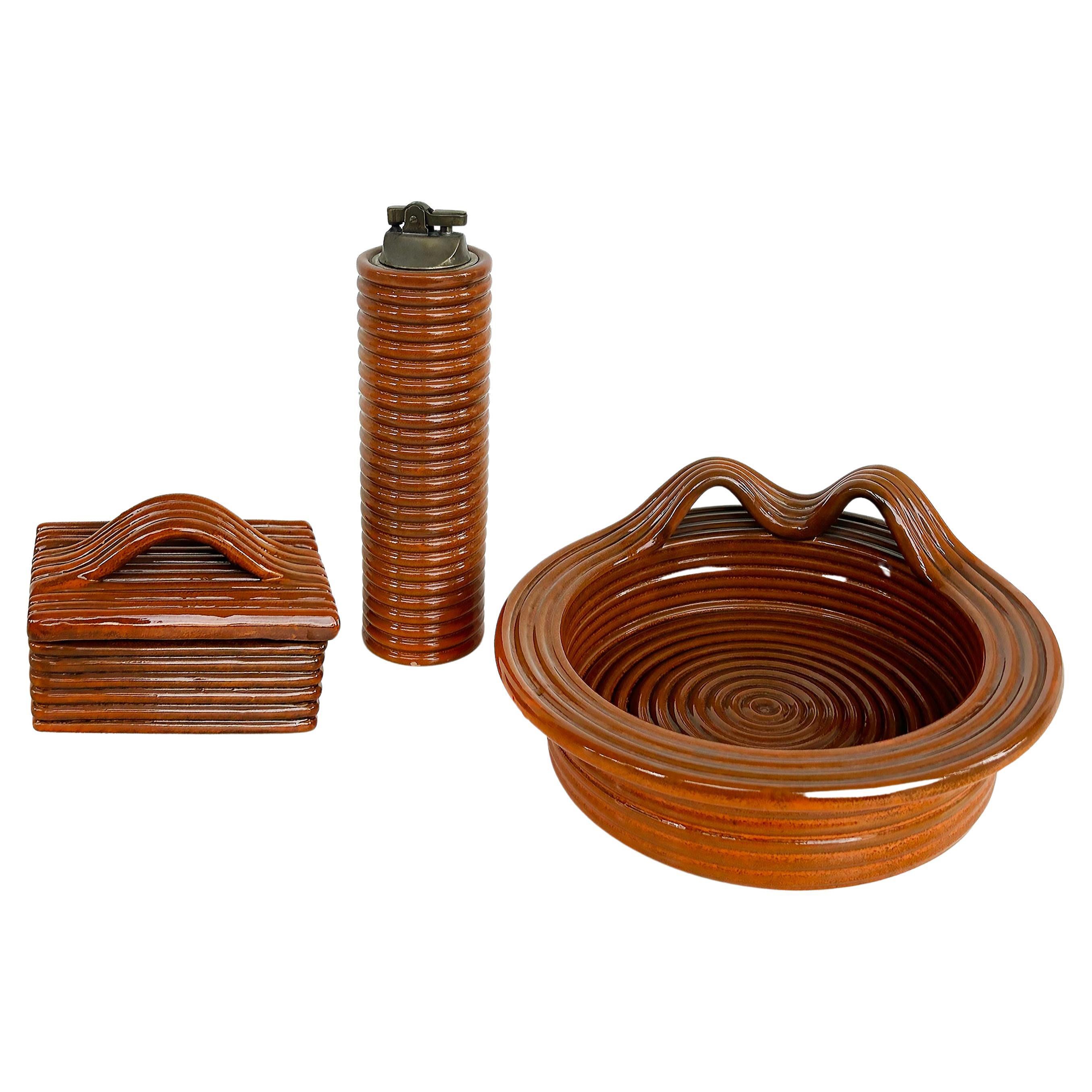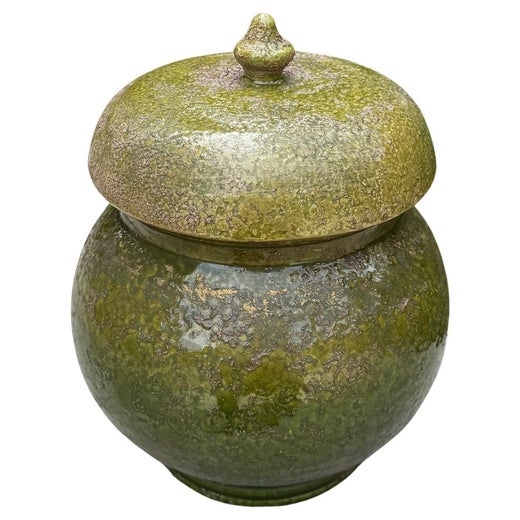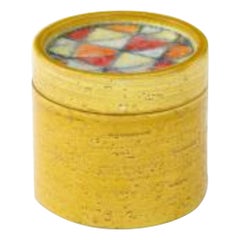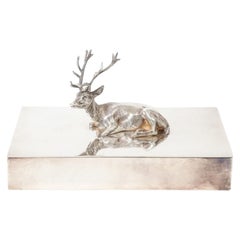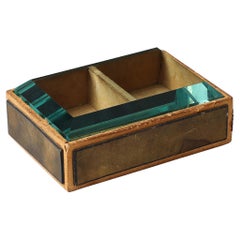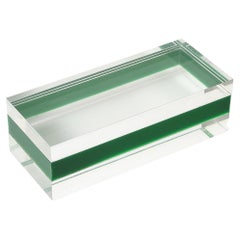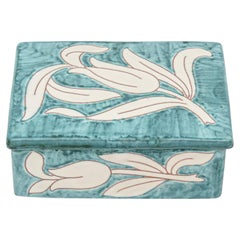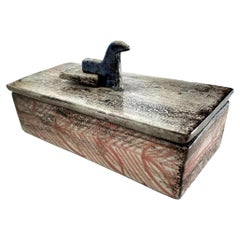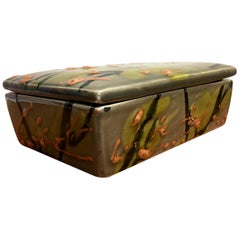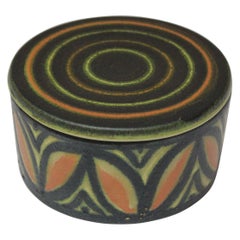Green and White Two-Tone Glazed Porcelain Lidded Box by Raymor, c. 1960
About the Item
- Creator:Raymor (Maker)
- Dimensions:Height: 2.5 in (6.35 cm)Width: 6.25 in (15.88 cm)Depth: 4.5 in (11.43 cm)
- Style:Modern (Of the Period)
- Materials and Techniques:Porcelain,Glazed
- Place of Origin:
- Period:
- Date of Manufacture:c. 1960
- Condition:Wear consistent with age and use. Very good vintage condition; no chips or cracks.
- Seller Location:New York City, NY
- Reference Number:Seller: ACC19111stDibs: LU916535268172
Raymor
Few had their finger on the pulse of American furniture like importer and distributor Raymor. Founder Irving Richards first had his eyes opened to the world of furniture while attending the 1928 Salon d’Automne art and design fair in Paris. He joined Lightolier two years later and developed its business relationships, including with designer Russel Wright.
Wright and Richards met in 1935 and Russel Wright, Inc. was formed in 1936. Its American Modern ceramic tableware, produced under the name Wright Accessories in 1938, was a notably lucrative collaboration. Following the early success of American Modern, Richards obtained the majority share of Wright Accessories and changed its name to Raymor Mfg Division Inc. in 1941.
By 1952, the exclusivity over American Modern had ended (the line was initially produced by Wright Associates and later manufactured by Steubenville for two decades). To keep up with American markets, Raymor worked with prominent designers such as George Nelson, Arthur Umanoff, Ray and Charles Eames, and Hans J. Wegner.
The company’s imports expanded to Denmark, which contributed to the rise of Scandinavian modern designs in the American market. Throughout the 1950s, Richards established relationships with factories in Scandinavia, Italy and Germany, as well as with the influential tastemaker and importer Charles Stendig.
The furniture company Simmons bought Raymor in 1963 and changed its name to Raymor Richards, Morgenthau Inc. in 1969. During that time, Raymor’s Omnibus range of Scandinavian-style wall units became widely popular, along with Italian glass and pottery like Bitossi ceramics designed by Aldo Londi and Bagni ceramics by Alvino Bagni.
Shifting styles coupled with rising competition, and the departure of Richards from the company, ended Raymor. By the late 1970s, Raymor faced a wave of international factories able to produce similar products of lesser quality for a lower cost. Buyers were eager to frequently change their interior styles, limiting the need for high-end, durable furniture, which Raymor had been importing.
On 1stDibs, find a collection of vintage Raymor ceramics, lamps, decorative objects and more.
- ShippingRetrieving quote...Shipping from: New York, NY
- Return Policy
More From This Seller
View All20th Century Italian Modern Decorative Boxes
Ceramic
20th Century French Modern Decorative Boxes
Metal
Vintage 1970s Decorative Boxes
Glass, Wood
Vintage 1970s Italian Decorative Boxes
Lucite
Late 20th Century French Decorative Boxes
Metal
Vintage 1970s Italian Decorative Boxes
Silver, Brass
You May Also Like
Vintage 1960s Italian Mid-Century Modern Decorative Boxes
Ceramic
Vintage 1970s Italian Decorative Boxes
Ceramic
Vintage 1970s Italian Ceramics
Ceramic
Vintage 1960s Italian Mid-Century Modern Decorative Boxes
Ceramic
Mid-20th Century Italian Mid-Century Modern Ceramics
Ceramic
Mid-20th Century Italian Mid-Century Modern Snuff Boxes and Tobacco Boxes
Ceramic
Recently Viewed
View AllRead More
Who Were Guillerme et Chambron? French Veterans of WWII with a Knack for Clever, Quirky and Livable Furniture
Their charming solid-oak pieces offer homes utility and comfort.
Robert Stilin’s Interiors Are Infused with a Laid-Back Sophistication
The New York City– and Hamptons-based designer creates deeply layered interiors that project warmth and comfort.
